If you live in an area that experiences snowy or icy conditions in the winter months, hitting the road means paying close attention to conditions and adjusting your driving accordingly. Driving slower, braking easier, and allowing more distance between vehicles are all ways to stay safe, but possibly the most important thing to is to install winter or "snow" tires.
Winter tires are specifically designed to handle the challenges of driving in the most dangerous months of the year. From their tread patterns all the way down to the chemical compounds in the tread rubber, they are built specifically to provide better grip and more control in winter conditions.
Winter tires are made with tread rubber that maintains flexibility in low temperatures. All season and summer tires are made for warm climates and designed to withstand heat generated on the road. They are not designed for freezing temperatures tend stiffen in cold climates.
When a tire stiffens, it is unable to provide the optimal traction you'll need to accelerate and stop.
Tread patterns of winter tires are very different than all season and summer tires. They feaure deeper tread depths with increased slots and sipes. Sipes are tiny slits in the tire that act as biting edges on ice. Together, these unique tread elements allow the tire to dig deep into snow, grip harder on ice, and ultimately provide more control.
Many people refer to winter tires as "snow" tires, but it's important to note that "snow" tires aren't just for when it's snowing outside. Winter tires are simply the best when it comes to maintaining traction, accelerating, stopping, and cornering in ice, snow, and slushy conditions.
These features help winter tires maintain traction on unpredictable winter roads. The softer rubber compound helps the tire maintain grip on an otherwise slippery road, the deeper tread pattern helps dig deeper into snow, while unique tread designs help channel water and slush from under the tire.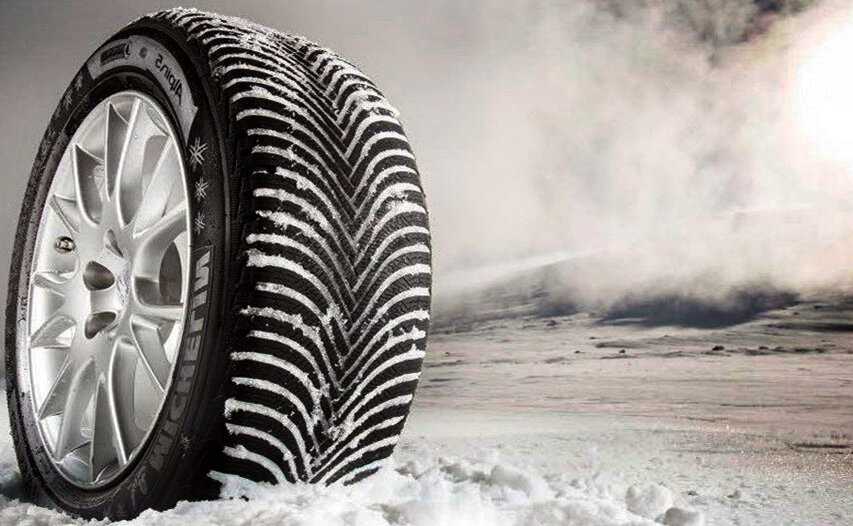 In the end, your vehicle is less prone to skids or slides with snow tires than with all-season tires - and they can help you accelerate and stop faster, too.
In the end, your vehicle is less prone to skids or slides with snow tires than with all-season tires - and they can help you accelerate and stop faster, too.
Whether your vehicle is front or rear-wheel drive, winter tires are best applied to all wheel positions. While some drivers question the necessity of changing all four, there are good reasons why tire and vehicle makers recommend using a full set of winter tires.
For one thing, just mounting two means you lose some of the traction, stopping and cornering advantages a full set provides. No matter what kind of vehicle you drive, never mount two winter tires on the front axle without also mounting them on the rear axle. Only installing snow tires on the front wheels increases the risk of losing rear tire traction while braking or cornering on wintery roads. This is because the back wheels will have less grip than the front wheels, a scenario that can throw you into a rear-wheel skid.
But what about just mounting winter tires on the back wheels, especially if your vehicle is rear-wheel drive, shouldn't that be enough?
Remember that in a rear-wheel drive vehicle, the front wheels steer and the rear wheels provide the power. So if your rear tires can grip the road but the front tires can't, any effort to steer the vehicle in the direction you want to go on wintery roads will be more difficult.
Mounting a full set of winter tires is clearly a great option for driving in extreme cold, snow and ice, but how should you go about installing them? The answer to that question depends on where you live and when the winter weather arrives. Here's a good primer for when and how to install winter tires:
You should definitely have winter tires installed before the winter weather hits. A good rule of thumb is that if you're consistently able to see your breath, it's time to mount winter tires.
Want to reduce waiting time at the auto shop? Have a technician mount your winter tires on another set of wheels that meet vehicle specifications (don't forget about the sensors for a Tire Pressure Monitoring System if your vehicles is so-equipped). Then, just change out the tire/wheel assemblies for the season - it's much easier than mounting and un-mounting tires every year!
Winter tires are designed for optimum performance in winter conditions while summer and all-season tires are designed for summer performance. Driving on winter tires in the warmer months is not what they are designed for and can cause the tires to wear out faster.
No matter what kind of tires you drive on, be mindful of wintery road conditions and the possibility of encountering surfaces that are more slippery than others. It is always best to slow down and give yourself more time to get where you want to go.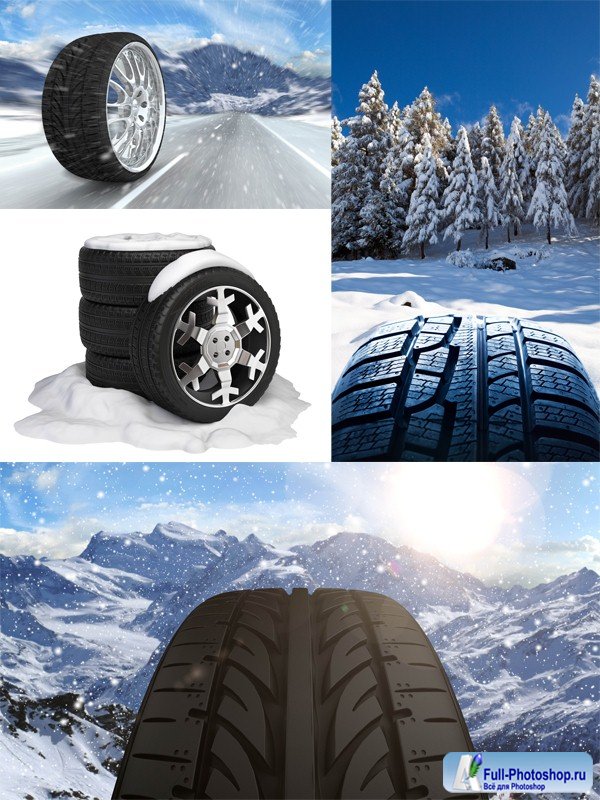 Making snow tire installation a seasonal habit also helps improve safety on the road. If you encounter snowy, icy and slushy conditions each year, a full set of winter tires isn't just a matter of convenience - it's a precaution that could prevent an accident.
Making snow tire installation a seasonal habit also helps improve safety on the road. If you encounter snowy, icy and slushy conditions each year, a full set of winter tires isn't just a matter of convenience - it's a precaution that could prevent an accident.
Even with the best snow tires on the market, changing temperatures affect their ability to grip the road's surface. Listen to the pros, and know what to expect when the thermometer drops.
Learn More
Get familiar with your tire pressure gauge – you’re going to need it through the winter months. Find out why from a Bridgestone Winter Driving School Pro.
LEARN MORE
Can you drive snow and winter tires year round? It’s an idea that occurs to many drivers who experience winter weather: If I have to mount snow tires every year, why don’t I just keep them on my vehicle all the time?
Unfortunately, using snow tires year round isn’t recommended.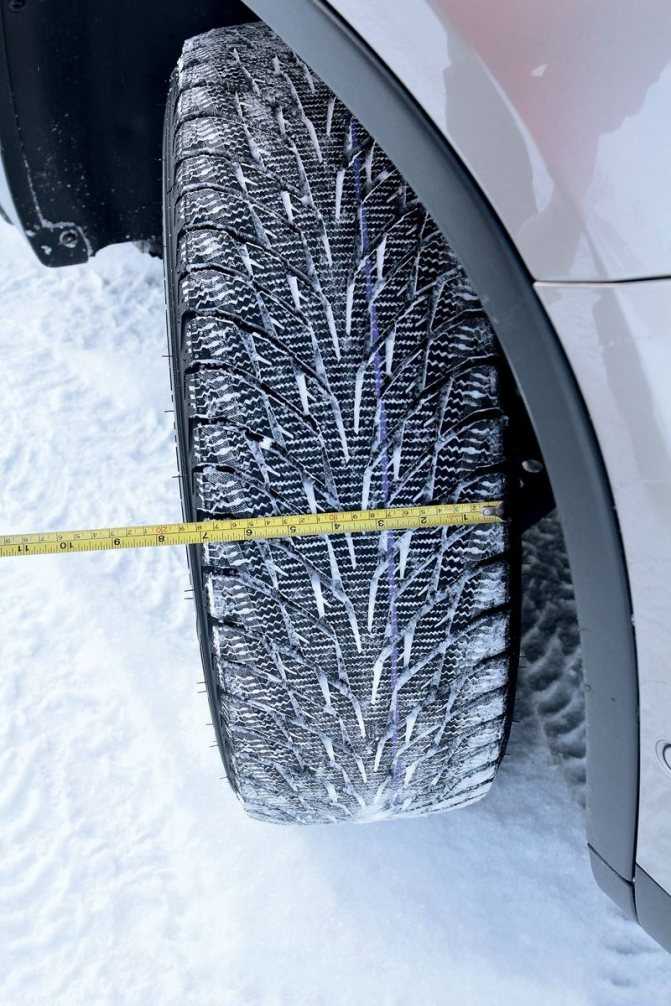 In the long run, it will cost more money than changing them out and could compromise your vehicle’s performance on the road. That’s why tire makers offer different types of tires for different seasons – the best option for you is determined by many factors including climate, driving style, and performance needs.
In the long run, it will cost more money than changing them out and could compromise your vehicle’s performance on the road. That’s why tire makers offer different types of tires for different seasons – the best option for you is determined by many factors including climate, driving style, and performance needs.
Here are some specific reasons why year-round use of winter tires is not advised. And if it’s the hassle of tire mounting, unmounting, and remounting that you’re tired of, we’ve included an idea for simplifying that process, too.
All winter tires, whether studless or studded, are made to maintain better traction in extreme cold, and on icy, snowy, or slushy roads. The rubber is able to remain softer, which makes it more flexible, allowing the tire to conform to the road better in extremely cold conditions. This feature, along with deeper tread depths and specialized tread designs, are what make snow/winter tires ideal for inclement winter weather and extreme cold driving conditions.
We use this analogy - tennis shoes. Yes, you can wear tennis shoes on the beach or in the snow, but wouldn't it be better to have flip flops on the beach and boots for the snow? Winter tires are like snow boots for your car.
Winter tires are specially designed for cold temperatures and winter precipitation. Once it gets warm, you won't need deep tread depths to handle snow or biting edges for traction on ice. Here are some specific reasons why using winter tires year round is not recommended.
Faster wear on warm, dry pavement - the tread rubber of winter tires is considerably more flexible than that of all season and summer tires. That same pliable tread rubber that adds traction in winter will wear down quickly in warm temperatures. Summer and all-season tires are built to withstand warm temperatures, providing long wear life.
Decreased performance - In warm weather, winter tires won't provide the same handling capabilities as summer or all-season tires. Imagine if you needed to make a quick maneuver and your tires were soft and squishy. You won't get the crisp response from a winter tire in warm weather. Winter tires need that flexibilitity to handle ice and snow, but it's not as useful in warm weather.
Imagine if you needed to make a quick maneuver and your tires were soft and squishy. You won't get the crisp response from a winter tire in warm weather. Winter tires need that flexibilitity to handle ice and snow, but it's not as useful in warm weather.
The specialized compounds and tread designs of winter tires are not designed for optimal warm climate performance and wear. Generally speaking, the softer tread of a winter tire will wear out faster in warmer temperatures. If you keep winter tires on your vehicle after winter has come and gone, you will have to replace them sooner than had you removed them for springtime.
That’s why using snow tires year round is more expensive than mounting them seasonally. The sooner they wear out, the sooner you have to replace them.
Driving on snow tires year-round could compromise optimal tread wear and ultimately be more expensive than just changing tires out for the season.
If you were considering year-round use of winter tires because you were tired of having to change them, here’s an idea that could save you time and money. Purchase wheels with the same diameter and bolt pattern as your current wheels. Mount your snow tires on those and store them in the garage until winter arrives.
Purchase wheels with the same diameter and bolt pattern as your current wheels. Mount your snow tires on those and store them in the garage until winter arrives.
Instead of having to change out your tires each season, just have a technician change the wheels. It’s a quick, relatively inexpensive alternative to mounting and unmounting snow tires every season.
Even with the best snow tires on the market, changing temperatures affect their ability to grip the road's surface. Listen to the pros, and know what to expect when the thermometer drops.
Learn More
Even with the best snow tires on the market, changing temperatures affect their ability to grip the road’s surface. Listen to the pros, and know what to expect when the thermometer drops.
LEARN MORE
0003Related materials
7 rubber signals: what the tire says about car problems
How do you know when tires are completely worn out and it's time to change them? Everything is simple.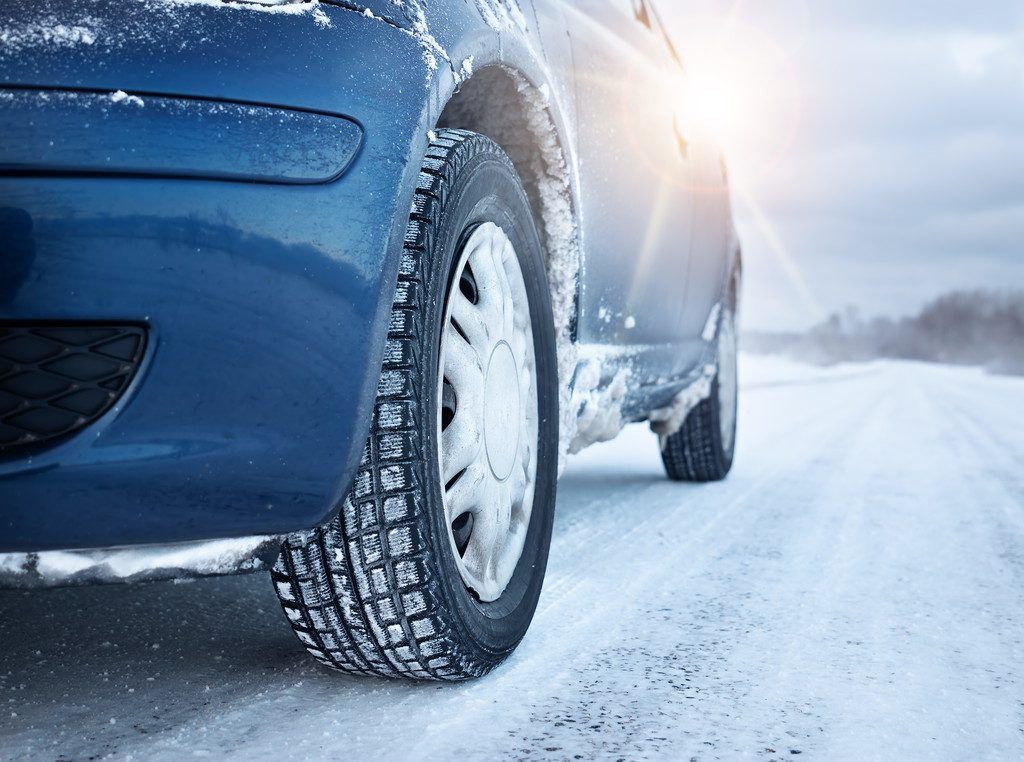 For summer tires, the limit is 1.6 mm of residual tread depth, and for winter (or all-season tires used in winter) - 4 mm. Modern summer tires can travel from 40,000 to 70,000 km, depending on driving style and vehicle characteristics. An average motorist rolls such a mileage on summer tires in 2-3 seasons. Moreover, wear implies not only a decrease in tread depth. For millions of cycles of deformation, the strength of the carcass and its adhesion to the layers of the rubber compound are violated. In short, every 2-3 years you should buy a new set of tires.
For summer tires, the limit is 1.6 mm of residual tread depth, and for winter (or all-season tires used in winter) - 4 mm. Modern summer tires can travel from 40,000 to 70,000 km, depending on driving style and vehicle characteristics. An average motorist rolls such a mileage on summer tires in 2-3 seasons. Moreover, wear implies not only a decrease in tread depth. For millions of cycles of deformation, the strength of the carcass and its adhesion to the layers of the rubber compound are violated. In short, every 2-3 years you should buy a new set of tires.
In case of irreparable damage to one of the tires and a relatively high total mileage of the kit, it is also worth considering replacing it. Well, or about buying at least a pair of new tires, which, for any type of drive, should be installed on the front axle. We put two tires back - the most decent of the remaining ones.
Many motorists drive only a few thousand kilometers a year. This does not mean that the tires will serve you for several decades. According to Russian requirements (GOST 4754-97), the service life of passenger car tires is 5 years from the date of manufacture. And for example, Continental recommends that all car tires (including the spare tire) older than 10 years old should be replaced with new ones. Therefore, with small runs, you can navigate for ten years. The date of manufacture of the tire is indicated on the sidewall. Usually it is an oval with four numbers. The first two are the ordinal number of the week in the year, the last two indicate the year.
This does not mean that the tires will serve you for several decades. According to Russian requirements (GOST 4754-97), the service life of passenger car tires is 5 years from the date of manufacture. And for example, Continental recommends that all car tires (including the spare tire) older than 10 years old should be replaced with new ones. Therefore, with small runs, you can navigate for ten years. The date of manufacture of the tire is indicated on the sidewall. Usually it is an oval with four numbers. The first two are the ordinal number of the week in the year, the last two indicate the year.
Related materials
How to change the car yourself - detailed instructions
Tires should be rotated periodically in accordance with the vehicle manufacturer's recommendations - information on this can be found in the owner's manual.
We can advise you to carefully use the tires and, most importantly, to store them correctly in the off-season. First of all, during storage, it is important to exclude direct sunlight from hitting the tires, which greatly age the rubber. Tires without rims should be placed vertically, and stacked on rims.
First of all, during storage, it is important to exclude direct sunlight from hitting the tires, which greatly age the rubber. Tires without rims should be placed vertically, and stacked on rims.
And before installing tires on a car at the beginning of the season, evaluate their condition. There should be no cracks in the tread and sidewalls. The tire should not be dry, it should remain rubbery and not look like baked plastic.
Related materials
Driving on badly worn tires - will I be fined or not?
Winter tires have a much shorter life span. They almost always fail due to the wear of the treadmill, because the tread of a new tire is 7–8 mm, and only 3–4 mm remain working height. If the tires are studded, then with such wear there are very few metal elements left, and the tire will not provide adequate safety when driving on a winter road. However, not only spikes, but also Velcro, with such a degree of wear, also lose most of their capabilities.
The real life of winter tires rarely exceeds 30,000 km. "Bald" winter tires without studs can be re-rolled in summer, but their grip on hot road surfaces will be very poor. This must be taken into account, especially when braking.
***
So: tires that have not yet worn out along the tread (that is, up to 1.6 mm tread depth for summer tires, 4 mm for winter tires) are changed either ten years after the date of issue, or when the rubber layer cracks tires or damage.
Our new video
Consumption 2-3 l/100 km! Test of the most economical UAZ
Test of the earliest VAZ-2103 from the surviving
Test of a new crossover. Again "Chinese"? Not quite
Did you like the note? Subscribe and you will always be in the know!
Driving on Yandex.Zen
News smi2.ru
What are spikes and why are they needed?
Purpose of studs on winter tires
How many studs are on winter tires from different manufacturers?
How many studs are on winter tires of different sizes?
Conclusion
Choosing winter tires for the next year, drivers are actively studying ratings, expert reviews, reviews of other motorists. In each of these materials, you can find divisions into studded and non-studded tires. In the first case, special attention is paid to the wear resistance of metal inserts. To make it easier to choose the right tires and control the level of durability, attentive drivers sometimes ask themselves the question: “How many studs are on winter tires, and what does this parameter affect?”. In this article we will try to understand the features of modern studding, but it is worth mentioning right away that the exact number of inserts depends on the manufacturer and the specific model.
In each of these materials, you can find divisions into studded and non-studded tires. In the first case, special attention is paid to the wear resistance of metal inserts. To make it easier to choose the right tires and control the level of durability, attentive drivers sometimes ask themselves the question: “How many studs are on winter tires, and what does this parameter affect?”. In this article we will try to understand the features of modern studding, but it is worth mentioning right away that the exact number of inserts depends on the manufacturer and the specific model.
Studs are found exclusively on winter tires and are not allowed for use in every region. Metal inserts can spoil the road surface, and therefore in countries with warm winters they are completely banned.
The spike is a two-piece metal element.
The core of the inclusion or the so-called body. This is the part of the stud that is visible when visually inspecting the tires. The rod is responsible for holding the metal structure in winter tires. This part of the stud is made of light alloy and may have additional serrations that reduce the risk of flying out.
The rod is responsible for holding the metal structure in winter tires. This part of the stud is made of light alloy and may have additional serrations that reduce the risk of flying out.
The core of the spike. This bulging part is of the greatest importance, as it provides traction on ice and packed snow.
Winter tire manufacturers are redesigning the carbide insert and body to provide better wear and grip. However, the weight of the spike is limited. In Russia, this parameter should not exceed 1.6 g. Tires made in Finland have a stricter limit of 1.1 g.
The tasks of tires used in winter are reduced to the need to cope with slush and mud, provide flotation in deep snow and efficient braking, fast acceleration on ice. To perform the latter function, spikes are used. They work on ice and packed snow, literally biting into the surface.
Obviously, the greater the number of metal inserts in studded tires, the more effective braking and acceleration. However, with the use of new technologies, some manufacturers have managed to achieve good performance with a small number of studs. The car is confidently controlled on a slippery road due to sipes and grip blocks on tires, an improved rubber compound.
However, with the use of new technologies, some manufacturers have managed to achieve good performance with a small number of studs. The car is confidently controlled on a slippery road due to sipes and grip blocks on tires, an improved rubber compound.
As mentioned above, the number of metal inserts is regulated in different countries in their own way. The inclusion of studs in the design of the tire is only allowed in the Scandinavian and European countries. Asian regions do not welcome the use of metal hooks, but some manufacturers from Japan, Korea and China make similar models for import to countries with a cold climate. A striking example of such brands is Bridgestone, Yokohama. In various models from Asian plants, a large number of spikes cannot be seen. As a rule, the number of metal inserts does not exceed 130 pieces per tire.
In the Scandinavian countries since 2009 there has been a regulation prohibiting the installation of spikes in quantities of more than 50 pieces per linear meter.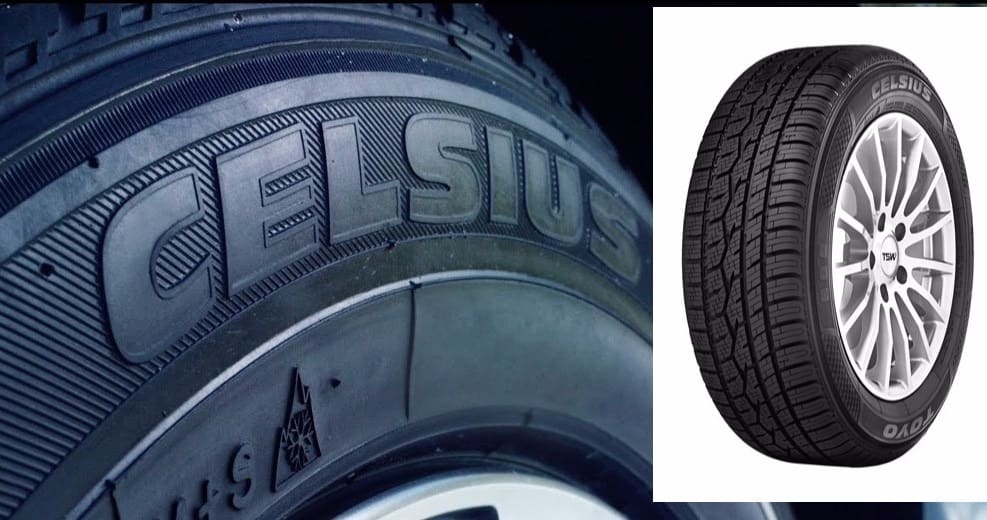 However, this regulation has a caveat. A manufacturer can make more studs on their tires if they can prove that it does not harm asphalt and other road surfaces. Finnish brands hold the record for the number of holds. In some models, their number can reach 180 units.
However, this regulation has a caveat. A manufacturer can make more studs on their tires if they can prove that it does not harm asphalt and other road surfaces. Finnish brands hold the record for the number of holds. In some models, their number can reach 180 units.
Domestic manufacturers have no restrictions on the number of studs on tires produced. Therefore, in the models of Russian brands, you can find from 130 to 160 metal inserts.
The number of metal inserts ranges from 90 to 190 pieces. The exact quantity is an individual parameter, which is influenced by the design features and the technologies used.
This size is very common among budget cars. On winter tires Nokian Nordman 5 size R13, 110 studs were counted. It is worth noting here that according to generally accepted standards, the number of metal inserts on rubber of this diameter should be up to 90 pieces per wheel, but some manufacturers exceed this figure if it does not harm the road surface.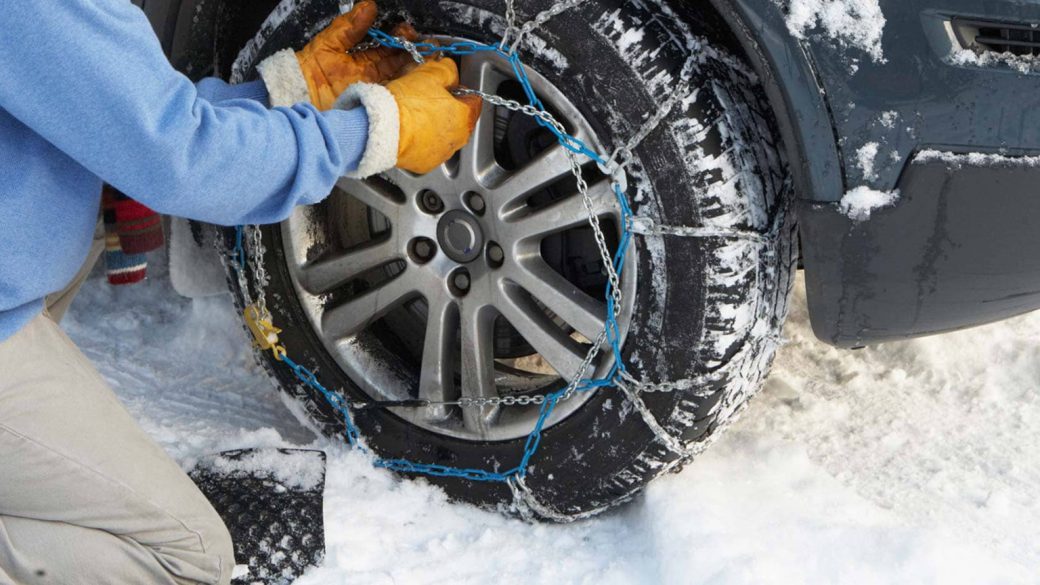
New cars of domestic production (Grant, Priora and others) are already equipped with R14 wheels, so this size is gradually replacing the 13th diameter. On winter tires Nokian Nordman 4 and 5 also managed to count 110 studs. Cordiant Polar has similar indicators. Fewer studs for Gislaved Nord Frost rubber - 90, as it should be by established standards. Nokian Hakkapeliitta 8 - 165 tires became the leader in the number of metal inserts.
If we take the same Nokian Nordman 5, you can see that the number of spikes on the rubber does not change with increasing diameter. On the R15, in which budget foreign cars and domestic cars of a complete set are “shoeed”, there are still the same 110 pieces. The tendency to keep the same number of studs is also seen in Cordiant, Bridgestone, Gislaved, KAMA.
This diameter is common among class C foreign cars. Chinese Nexen with R16 diameter have 108 studs. Nokian Hakkapeliitta 9 has a record number of 172, while Nokian Nordman 4 and Pirelli Ice Zero have 130 each.
Chinese Nexen with R16 diameter have 108 studs. Nokian Hakkapeliitta 9 has a record number of 172, while Nokian Nordman 4 and Pirelli Ice Zero have 130 each.
This tire is suitable for luxury cars and crossovers. Goodyear has 130 studded 17-inch tires with its UltraGrip Ice Arctic model.
This large size winter tire is used on SUVs and some SUVs. The number of spikes often exceeds 130 pieces. However, there are also models with a limited number. For example, Toyo Tires managed to count 100 spikes.
The average number of studs for rubber of different diameters can be found in this table.
| Wheel size | Number of spikes (pcs) |
| R13 | 90-110 |
| R14 | 90-110 |
| R15 | 110 |
| R16 | 100-180 |
| R17 | 130 |
| R18 | 100-160 |
As can be seen from the review of some popular models, tire size has little to no effect on the number of studs.
During operation, winter tires may lose their studs. The rate of wear of rubber depends on the quality of the chosen model and the characteristics of the road surface. According to current standards, studded winter tires can be used even if 40% of the metal inserts are retained. When buying tires for the winter, you should pay attention not only to how many studs are in a particular model and what is the level of wear, but also to other important features:
patency;
exchange rate stability;
rubber softness;
stability of characteristics in different weather conditions;
hydroplaning resistance and rapid water drainage.
At the same time, it is worth remembering that studded winter tires are noisier and require running in, which will help extend their life. At the same time, spikes are not always needed for a comfortable and safe ride in winter.